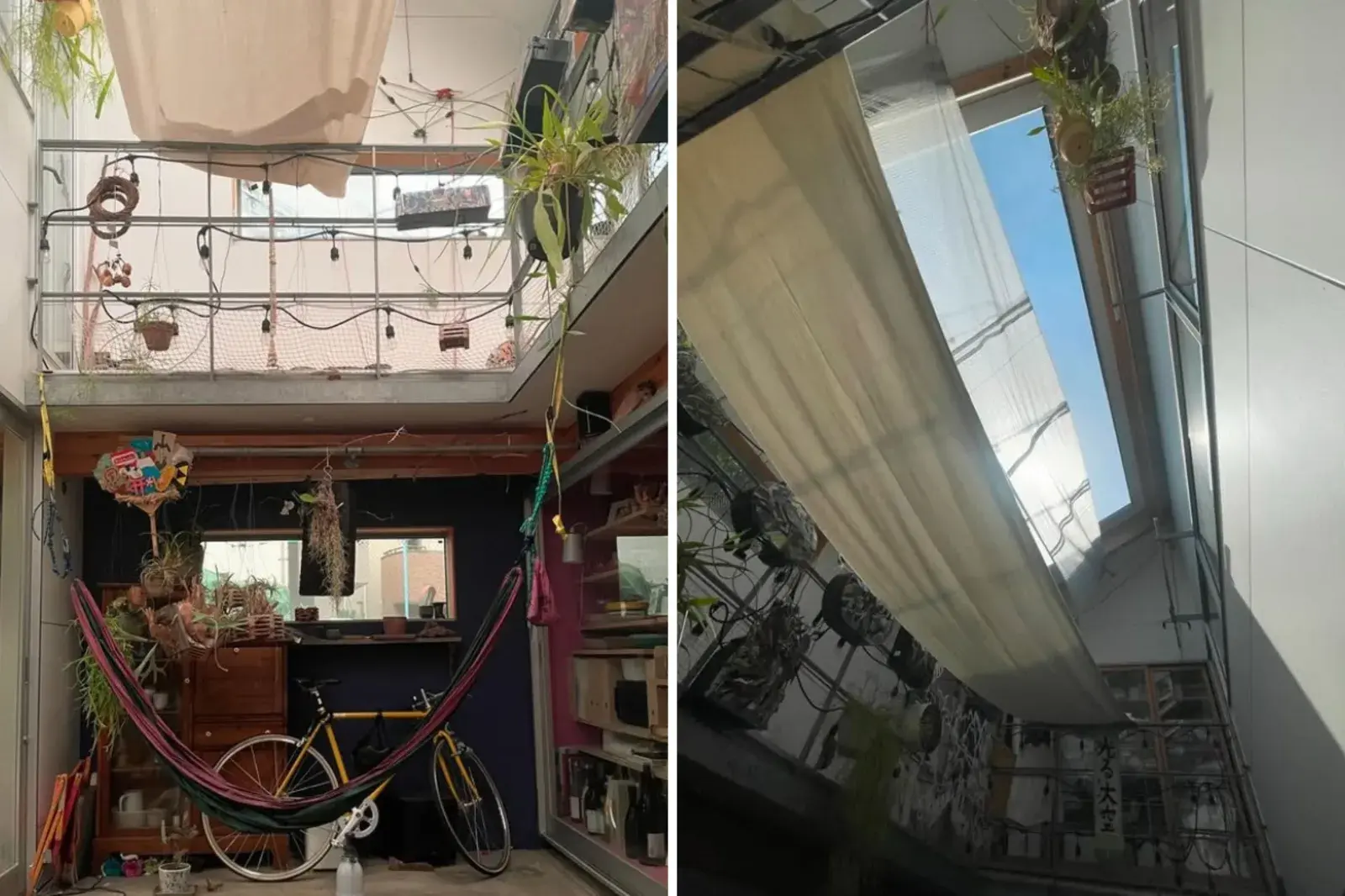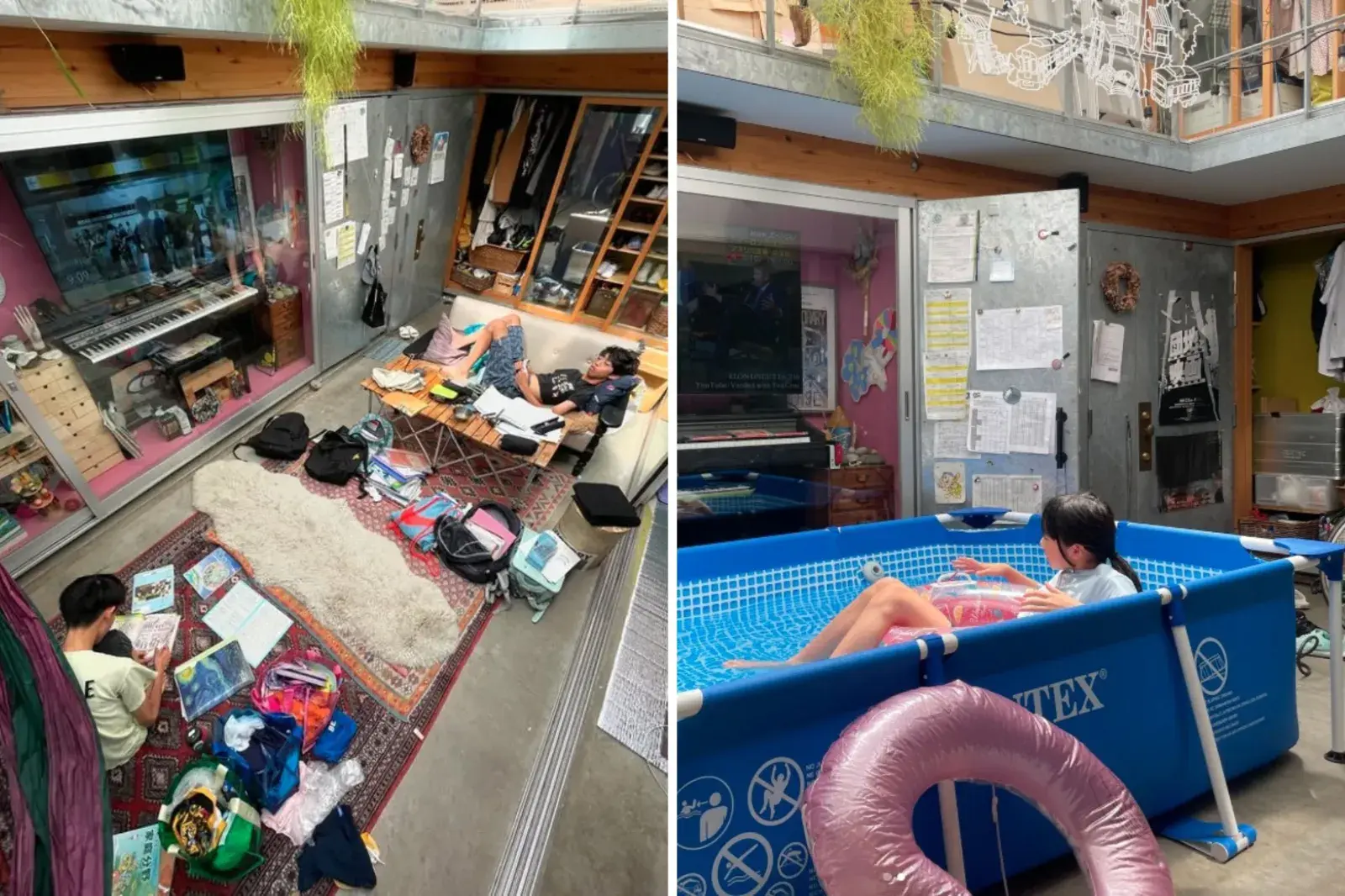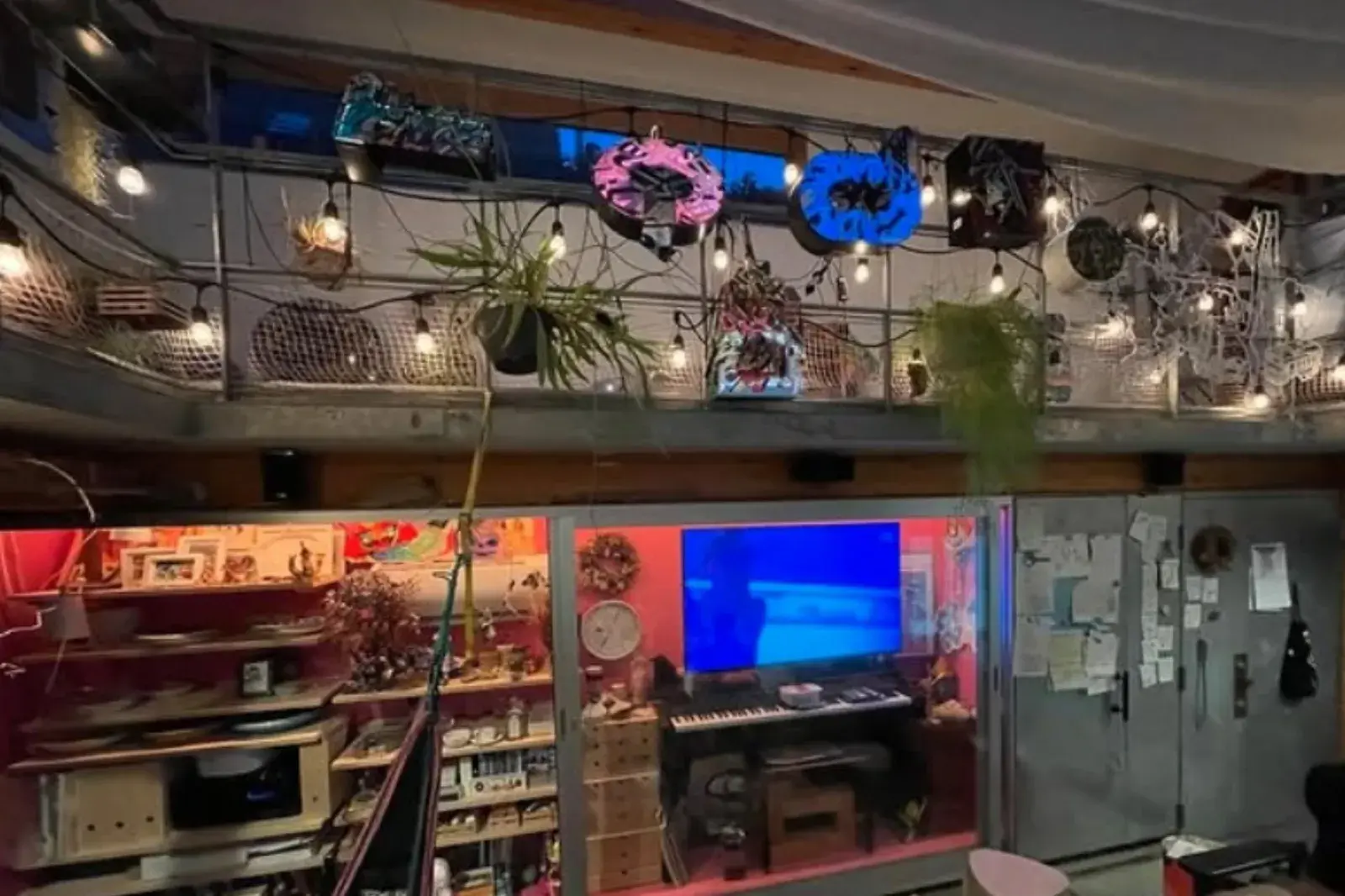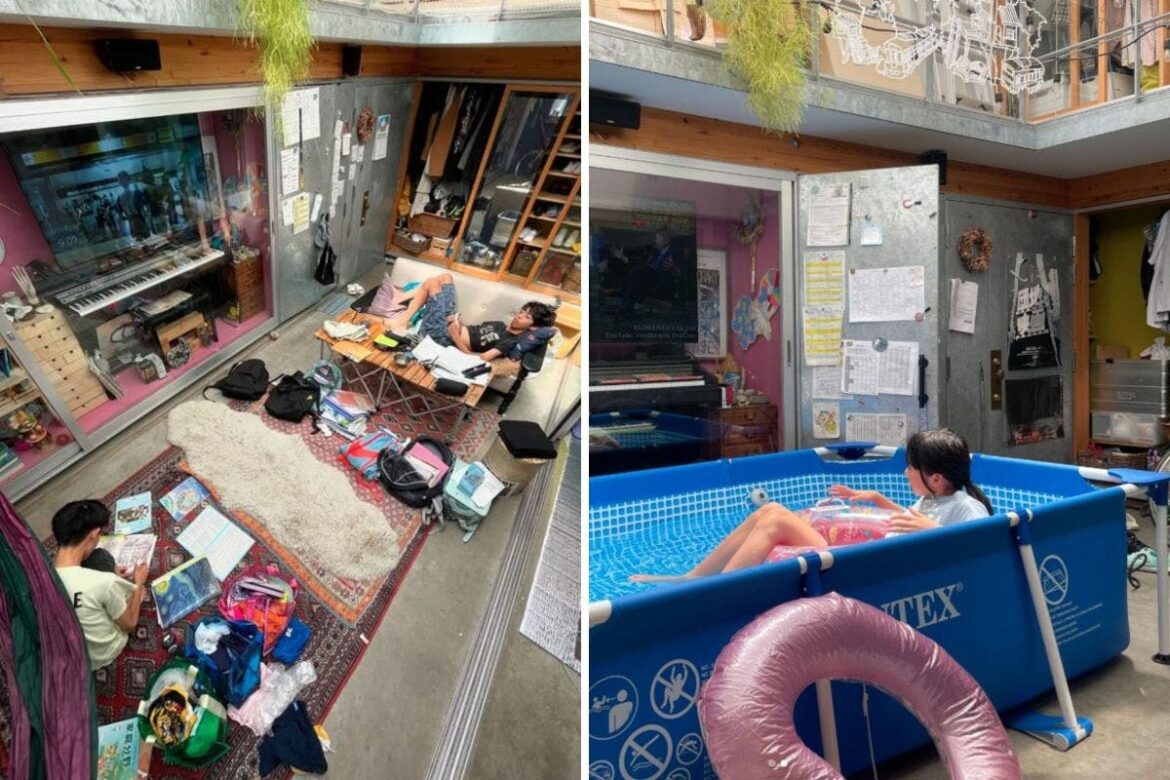In a quiet neighborhood of Tokyo, the Japanese capital known for its density and soaring property prices, a strikingly unconventional home challenges the boundaries of urban architecture.
Designed by Japanese architect and artist Nobufumi Takahashi—who works under the name Zajirogh—the Open Sky House is a two-story, 613-square-foot residence that does away with a fundamental element of traditional architecture—the roof.
“My home is located between Kami-Shakujii Station and Nishi-Ogikubo Station in Tokyo. It’s a quiet residential neighborhood, yet within easy bicycle distance of Kichijoji, one of the city’s major hubs—a well-balanced area where urban life and calm living coexist,” Zajirogh told Newsweek.

Constrained by limited space and rigid local building regulations, Zajirogh devised a novel solution to give his family of five a livable, spacious-feeling home.
“The plot of land is small, and the building coverage ratio was quite restrictive,” he said. “I had to find a way for a family of five to live comfortably within those limits. Eventually, I realized that by making the living room ‘outdoors,’ we could gain a sense of spaciousness and freedom even on a small site. This house is newly built, not a renovation of an older one.”
The home features a kitchen and bathroom on the ground floor, and bedrooms on the second floor. But the centerpiece of the design is its open-air living room, a roofless space that serves as a central gathering area for the family.

“I’ve been living here for four years. The total floor area is about 57 square meters [around 613 square feet], and it’s a two-story wooden house. The first floor contains the kitchen and bathroom, and the second floor is used as the bedroom. The living area is an open-air space without a roof,” Zajirogh said.
This open-air concept isn’t just an architectural quirk—it’s a deliberate effort to reimagine city living and reconnect with the natural environment. “As an architect, I wanted to experiment with the idea of bringing the outside into the interior,” he said. “The roof is one of the most symbolic elements of architecture, but by removing it, I thought I could reintroduce nature back into the city. Because of legal constraints on the site, the resulting living room became a unique space unlike anything anyone has seen before.”
Zajirogh has adapted to Tokyo’s weather with a flexible setup. “Most of the time, a tarp covers the roof—much like the soft top of a convertible car,” he explained. “I open it on sunny days, when friends come over, or when we barbecue at home. In summer, the cool air tends to stay near the floor, so it’s relatively easy to keep comfortable. In winter, since heat rises and escapes, I rely on radiant heat using floor heating and gas stoves. It’s a lifestyle similar to camping in the city—I’m constantly aware of wind, temperature, and light.”

Zajirogh likens life in the house to “living on a boat,” he said.
“A boat is full of ingenuity—every inch of space has multiple uses. I use sailing gear for the roof tarp, and adjusting the ropes according to the weather feels much like handling a yacht. Watching the sky and reacting to the wind gives daily life a nautical rhythm,” he added.
“The house is bright, and nature feels very close. When it rains, the sound is loud and comforting. Interestingly, the roofed spaces become thermally more stable because the open-air sections act as a kind of buffer zone, so the overall comfort is often better than in ordinary homes,” he said.

While Zajirogh’s home design is a personal experiment, it arrives at a moment when conventional housing models are under pressure globally.
In the United States, a 2024 report by the Joint Center for Housing Studies at Harvard University found that soaring home prices and interest rates have priced out millions of prospective homeowners. Prices have surged in 97 of the top 100 housing markets, with particularly sharp increases in the Northeast and Midwest.
Meanwhile, the rental market is also in crisis. Nearly half of all renter households in the U.S. are “cost-burdened,” meaning they spend more than 30 percent of their income on rent. An estimated 12.1 million renters are classified as “severely cost-burdened,” spending over half their income on housing, according to the Harvard report.
Do you have an architecture or interior design-related story to share? Let us know via life@newsweek.com and your story could be featured on Newsweek.


AloJapan.com